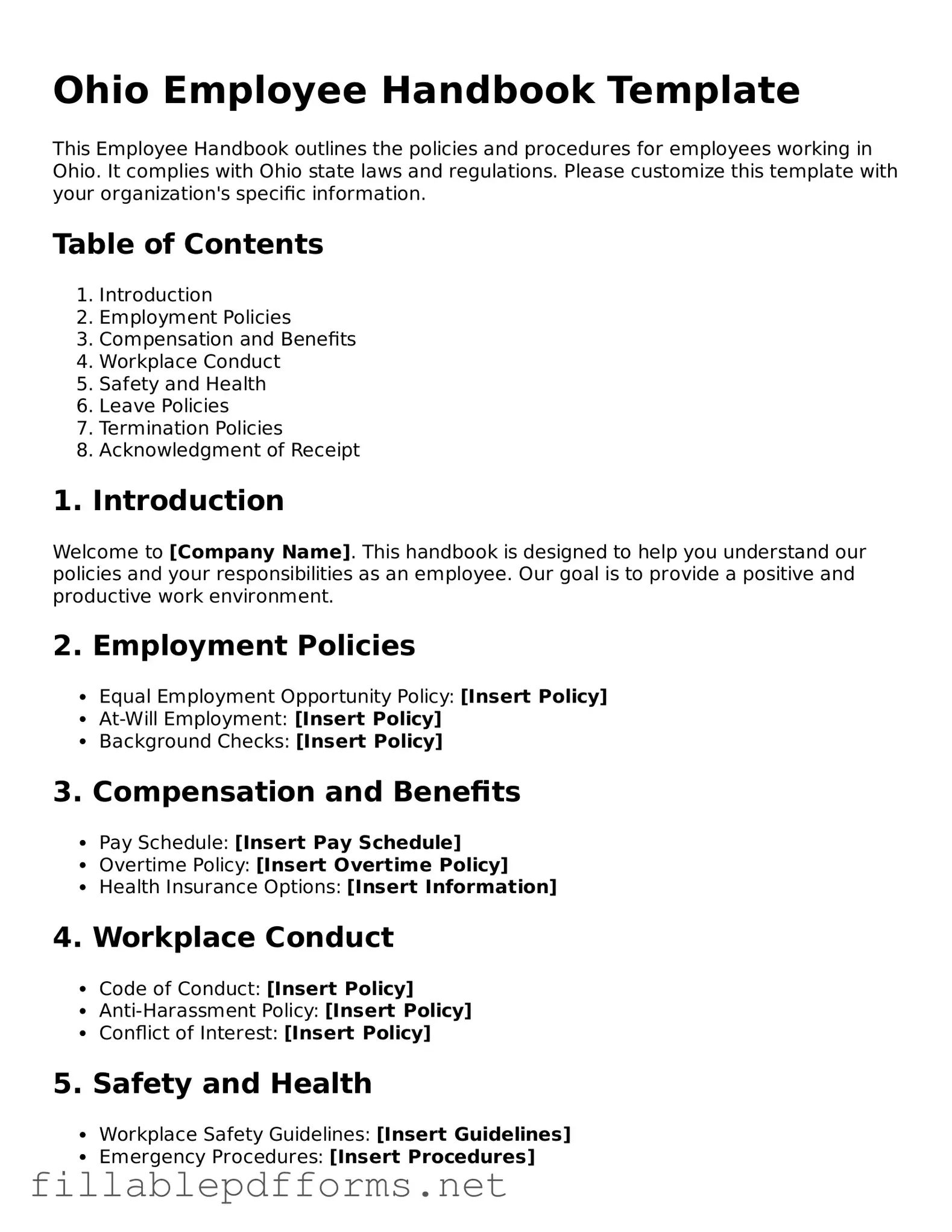Creating a comprehensive employee handbook is a crucial step for any business operating in Ohio. This document serves not only as a guide for employees but also as a protective measure for employers. It outlines essential policies, workplace expectations, and legal rights, ensuring that everyone is on the same page. Key components typically include information on workplace conduct, anti-discrimination policies, and procedures for reporting grievances. Additionally, it addresses benefits, leave policies, and disciplinary actions, providing clarity and structure in the workplace. A well-crafted employee handbook can help prevent misunderstandings and foster a positive work environment, making it an indispensable tool for both employees and management. In Ohio, specific legal requirements must be met, making it imperative to stay informed and compliant. This article will delve into the major aspects of the Ohio Employee Handbook form, emphasizing its importance and the best practices for creating an effective handbook that aligns with state laws.
